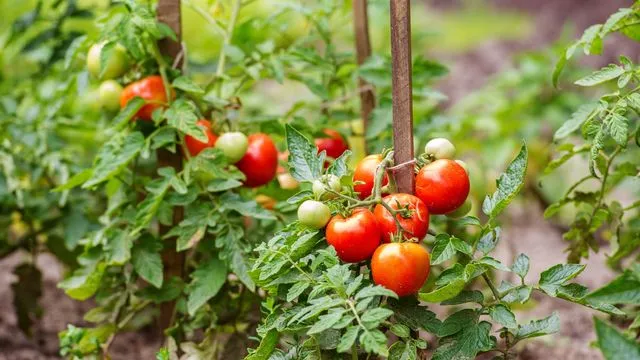Tomatoes are a staple in home gardens, cherished for their versatility and the robust flavor they add to dishes. However, their cultivation can be tricky, especially when it comes to plant companionship in the garden. Certain plants can hinder tomatoes’ growth or make them more susceptible to diseases and pests. Here’s a guide on what not to plant next to tomatoes to ensure a healthy and bountiful harvest.
Understanding Plant Companionship
Choosing the right neighbors for your tomatoes can prevent competition for nutrients and reduce the risk of disease and pest infestations. This strategic planting can help maximize space in your garden and enhance growth and yield without resorting to chemical fertilizers.
What Not to Plant Near Tomatoes
- Potatoes: Sharing the nightshade family with tomatoes, potatoes are prone to the same diseases. If potatoes contract an illness, tomatoes are likely to follow suit. Additionally, potatoes attract the Colorado potato beetle, a pest that can also damage tomatoes.
- Eggplant: Another nightshade family member, eggplants are susceptible to downy mildew. Planting them near tomatoes can lead to a quick spread of the disease.
- Peppers and Chili Peppers: Although delicious together in dishes, their close planting can be problematic due to their shared vulnerability to mildew, exacerbated by humid conditions.
- Certain Cabbages: While tomatoes can help protect some cabbages from pests like whiteflies, planting them near kohlrabi and red cabbage can induce a magnesium deficiency in tomatoes, affecting their health and fruit quality.
- Walnut Trees: Walnuts release juglone, a chemical harmful to tomatoes, stunting their growth or even killing them.
- Fennel: The chemicals in fennel roots can inhibit tomato germination and overall plant health.
- Melons: Like tomatoes, melons are susceptible to powdery mildew. Close proximity can lead to rapid disease transmission between the plants.
- Beetroots: For reasons not fully understood, tomatoes do not thrive when planted near beetroots.
- Corn: Corn attracts Heliothis zea, a pest whose larvae can quickly devastate tomato plants.
Favorable Companions for Tomatoes
While some plants are detrimental to tomatoes, others can be beneficial:
- Marigolds: Protect tomatoes from pests like whiteflies and nematodes.
- Parsley: Believed to enhance tomato growth.
- Carrots: Occupy space under tomatoes, helping with soil aeration.
- Cosmos and Garlic: Deter nematodes and prevent fungal diseases.
- Asparagus, Spinach, Cucumber, and Tetragon: These plants are compatible with tomatoes and can lead to better yields.
- Other beneficial companions: Include German chamomile, geranium, onions, watermelons, leeks, peas, radishes, and more marigolds.
Understanding which plants to avoid near tomatoes and which can be beneficial is crucial for any gardener looking to achieve a healthy and productive vegetable garden. Choosing the right plant companions will not only improve your tomato yield but also make your garden a more harmonious ecosystem.
